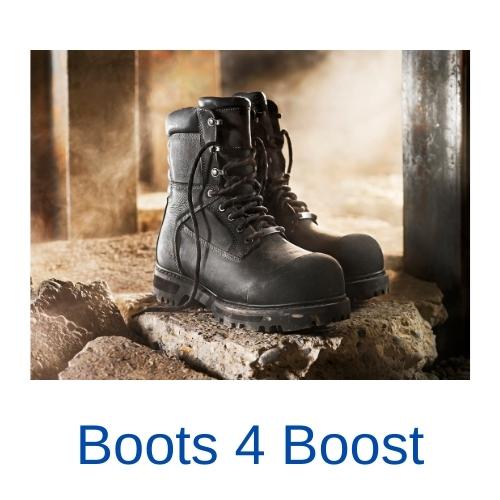
Introduction to Restoring Faded Leather
Leather, a material known for its durability and timeless appeal, can lose its luster over time. However, with proper care and restoration techniques, faded leather can be brought back to life. This blog post will provide an introduction to the process of restoring faded leather, focusing on the importance of leather restoration and an overview of the restoration process.
-
- Understanding the Importance of Leather Restoration
Leather restoration is not just about maintaining the aesthetic appeal of your leather items. It is also about preserving their functionality and extending their lifespan. When leather fades, it becomes more susceptible to damage and wear. By restoring faded leather, you can protect it from further damage and keep it looking its best for years to come.
-
- Overview of the Process of Restoring Faded Leather
The process of restoring faded leather involves several steps. First, the leather is cleaned to remove dirt and grime. Then, a leather conditioner is applied to restore the leather’s natural oils. Next, a color restorer is used to bring back the leather’s original color. Finally, a protective coating is applied to seal in the color and protect the leather from future damage. This process can be done at home with the right products and a bit of patience.
In the following sections, we will delve deeper into specific techniques for leather restoration, causes of leather fading, and case studies of successful leather restoration projects. We will also provide practical tips and tricks for leather care. Stay tuned to learn more about how to keep your leather items looking their best.
Leather Work Boots Care
Leather work boots are a valuable investment, offering durability, comfort, and protection. However, they require proper care to maintain their quality and extend their lifespan. Here, we will discuss some preventive measures for leather care.
Preventive Measures for Leather Care
Preventive care is the first step in maintaining the quality and longevity of your leather work boots. Two key aspects of preventive care are proper storage and regular cleaning and conditioning.
-
- Proper storage of leather work boots
Storing your leather work boots correctly is crucial to prevent damage. Always store your boots in a cool, dry place away from direct sunlight. Sunlight can cause the leather to fade and crack. Also, avoid storing them in plastic bags as this can trap moisture and lead to mold growth. Instead, use a breathable fabric bag or a shoe rack. If your boots are wet, let them dry naturally before storing them. Using a boot tree can help maintain their shape.
-
- Regular cleaning and conditioning
Regular cleaning is essential to remove dirt and grime that can wear down the leather over time. Use a soft brush or damp cloth to clean your boots. Avoid using harsh chemicals that can damage the leather. After cleaning, apply a leather conditioner to keep the leather soft and supple. Conditioning also helps prevent cracking and fading. Remember to test any new cleaning or conditioning product on a small, inconspicuous area of the boot first to ensure it doesn’t discolor the leather.
By following these preventive measures, you can keep your leather work boots looking their best and lasting longer. In the next section, we will discuss how to maintain your work boots properly.
Work Boots Maintenance
Maintaining your work boots is a crucial part of ensuring their longevity and performance. In this section, we will provide a step-by-step guide to maintaining work boots and highlight some common mistakes to avoid.
-
- Step-by-step guide to maintaining work boots
Proper maintenance of your work boots can extend their lifespan and keep them looking good. Here is a simple guide to help you:
-
-
- Cleaning: Remove dirt and dust from your boots using a soft brush. For stubborn stains, use a damp cloth and mild soap.
- Drying: If your boots get wet, let them dry naturally. Avoid placing them near heat sources as this can cause the leather to crack.
- Conditioning: Apply a leather conditioner to keep the material soft and prevent cracking. This should be done every few months, depending on how often you wear your boots.
- Polishing: For a shiny finish, apply a boot polish using a soft cloth. Buff the boots until they shine.
- Storage: Store your boots in a cool, dry place. Avoid direct sunlight as it can fade the leather.
- Common mistakes to avoid in work boots maintenance
-
While maintaining your work boots, it’s important to avoid these common mistakes:
-
- Using harsh cleaning products: These can damage the leather and cause it to crack.
- Drying boots near heat: This can cause the leather to dry out and crack.
- Not conditioning regularly: Leather needs to be conditioned to stay soft and flexible.
- Storing boots in damp areas: This can lead to mold and mildew growth.
By following these steps and avoiding common mistakes, you can keep your work boots in top condition for years to come.
Leather Restoration Techniques
Leather, a material known for its durability and timeless appeal, can sometimes show signs of wear and tear. However, with the right techniques, you can restore your leather goods to their former glory. Let’s delve into how you can do this.
How to Restore Leather
Restoring leather involves a few steps and some specific materials. Don’t worry, we’ll guide you through the entire process.
- Materials needed for leather restoration
Before we start, gather these materials:
| Materials | Description |
|---|---|
| Leather cleaner | A special cleaner designed to remove dirt and grime from leather without damaging it. |
| Leather conditioner | It helps to moisturize the leather, preventing it from drying out and cracking. |
| Soft cloth | Used to apply the cleaner and conditioner. Microfiber cloths are a good choice. |
| Leather dye | If your leather has faded, a dye can help restore its original color. |
- Step-by-step guide to restoring leather
Now that you have your materials, follow these steps:
- Clean the leather: Using your soft cloth, gently apply the leather cleaner to the surface of the item. Make sure to clean the entire surface.
- Condition the leather: After cleaning, apply the leather conditioner. This will help to restore the leather’s natural oils, keeping it soft and supple.
- Dye the leather: If your leather item has faded, you can use a leather dye to restore its color. Follow the instructions on the dye package for the best results.
- Let it dry: After applying the dye, let your item dry completely. This will allow the dye to fully penetrate the leather and ensure a uniform color.
And there you have it! With these simple steps, you can restore your leather items and keep them looking their best for years to come.
Advanced Leather Restoration Techniques
When it comes to leather restoration, there are certain techniques that professionals use to bring back the original shine and luster of the material. These techniques are especially useful when dealing with faded leather boots and severe leather damage. Let’s delve into these advanced methods.
- Professional techniques for restoring faded leather boots
Over time, leather boots can lose their original color and become faded. However, with the right techniques, you can restore their former glory. Here’s how professionals do it:
- Cleaning: The first step is to clean the boots thoroughly to remove any dirt or grime. This is usually done using a soft brush and a specialized leather cleaning solution.
- Conditioning: After cleaning, the boots are conditioned to restore their flexibility and prevent them from cracking. A high-quality leather conditioner is applied evenly over the surface of the boots.
- Color Restoration: For faded boots, a professional-grade leather dye is used to bring back the original color. The dye is applied in thin layers until the desired color is achieved.
- Sealing: Finally, a protective sealant is applied to the boots to protect them from future damage and to maintain the restored color.
- How to handle severe leather damage
Severe leather damage, such as deep scratches, cuts, or tears, requires a more intensive restoration process. Here are the steps professionals take to repair such damage:
- Damage Assessment: The first step is to assess the extent of the damage. This helps to determine the best course of action for repair.
- Preparation: The damaged area is then cleaned and prepped for repair. This often involves trimming any loose fibers and applying a leather prep solution.
- Repair: A leather repair compound is then applied to the damaged area. This compound is designed to fill in the damage and create a smooth surface.
- Color Matching: Once the repair compound has dried, it’s time to match the color of the repair area with the rest of the leather. This is done using a leather dye that closely matches the original color.
- Sealing: The final step is to apply a protective sealant to the repaired area to prevent future damage and to blend the repair with the rest of the leather.
By following these advanced leather restoration techniques, you can breathe new life into your faded or damaged leather boots. Remember, leather is a durable material that, with proper care and maintenance, can last for many years.
Faded Leather Boots: Causes and Solutions
Leather boots are a timeless fashion staple. However, over time, they can lose their original color and become faded. This section will help you understand why leather fades and how to prevent it from happening.
Understanding Why Leather Fades
Leather is a natural material, and like all natural materials, it reacts to its environment. Over time, factors such as sunlight, moisture, and improper care can cause leather to fade. Let’s dive deeper into these causes and learn how to prevent them.
-
- Common causes of leather fading
There are several reasons why your leather boots may fade:
-
-
- Sunlight: Prolonged exposure to the sun can cause the color of your leather boots to fade. This is because the UV rays from the sun can break down the dye in the leather.
- Moisture: Leather boots can also fade if they are frequently exposed to water or high humidity. This can cause the leather to lose its natural oils, leading to dryness and fading.
- Improper care: Using harsh cleaning products or not conditioning your boots regularly can also cause the leather to fade.
- How to prevent leather from fading
-
Now that we know the causes, let’s look at some solutions to prevent your leather boots from fading:
-
- Avoid sunlight: Try to keep your boots out of direct sunlight as much as possible. If you need to dry them, do so in a cool, shaded area.
- Proper cleaning: Use a gentle leather cleaner and avoid harsh chemicals. Always test a small area first to ensure the cleaner won’t cause discoloration.
- Regular conditioning: Conditioning your boots regularly can help to replenish the natural oils in the leather, keeping it supple and preventing fading.
By understanding the causes of leather fading and taking steps to prevent it, you can keep your leather boots looking their best for years to come.
Faded Work Boots Repair
It’s a common issue for work boots to fade over time. However, with the right techniques and care, you can breathe new life into your old, faded work boots. Let’s take a look at how you can do this.
-
- Step-by-step guide to repairing faded work boots
Repairing faded work boots is not as hard as it may seem. Here’s a simple guide to help you restore the color of your boots:
-
-
- Preparation: Start by cleaning your boots thoroughly. Use a soft brush to remove any dirt or dust.
- Conditioning: Apply a leather conditioner to your boots. This will help to restore the natural oils in the leather, making it more receptive to the dye.
- Dyeing: Choose a leather dye that matches the original color of your boots. Apply the dye evenly, using a sponge or a brush. Let it dry completely.
- Sealing: After the dye has dried, apply a leather sealer. This will help to protect the new color and make it last longer.
- Polishing: Finally, polish your boots to give them a shiny, new look. Use a boot polish that matches the color of your boots.
- How to maintain the color of your work boots
-
Once you’ve restored the color of your boots, it’s important to maintain it. Here are some tips to help you do this:
-
- Regular Cleaning: Clean your boots regularly to prevent dirt and grime from building up. This can cause the color to fade over time.
- Conditioning: Condition your boots regularly to keep the leather soft and supple. This will help to prevent the color from fading.
- Proper Storage: Store your boots in a cool, dry place. Exposure to heat and moisture can cause the color to fade.
- Avoid Direct Sunlight: Direct sunlight can cause the color of your boots to fade. Try to keep your boots out of the sun as much as possible.
With these tips and techniques, you can restore and maintain the color of your work boots, making them look as good as new.
Leather Boots Restoration: Case Studies
Let’s take a closer look at some real-life examples of leather boots restoration. These case studies provide practical insights into the process and demonstrate the impressive results that can be achieved.
-
Case Study 1: Successful Restoration of Heavily Faded Work Boots
Our first case study involves a pair of heavily faded work boots. The owner, a construction worker, had used them daily for over a year. The boots were faded, scratched, and seemed beyond repair.
However, with a careful application of a high-quality leather conditioner, the boots were brought back to life. The conditioner moisturized the leather, restoring its natural color and shine. The scratches were treated with a leather dye of the same color, making them almost invisible. After a few treatments, the boots looked almost new.
This case study shows that even heavily worn and faded boots can be restored with the right products and techniques.
-
Case Study 2: Reviving a Pair of Vintage Leather Boots
Our second case study involves a pair of vintage leather boots. These boots were over 20 years old and had been stored in a damp basement, causing the leather to dry out and crack.
The restoration process started with a thorough cleaning to remove the mold and dirt. Next, a leather repair kit was used to fill in the cracks. The boots were then conditioned and polished to restore their original luster.
This case study demonstrates that even old, neglected boots can be revived and made to look as good as new.
These case studies illustrate the transformative power of proper leather care and restoration. Whether your boots are heavily worn, faded, or even vintage, there’s always a way to bring them back to life. Remember, the key to successful leather restoration is patience, the right products, and a little bit of elbow grease.
Conclusion: Leather Care Tips and Tricks
In this article, we’ve delved deep into the world of leather work boots, exploring how to restore their original shine and maintain their durability. Let’s recap the key takeaways and share some additional tips for leather care.
-
- Recap of key takeaways in restoring and maintaining leather work boots
Restoring faded leather work boots is a process that requires patience and the right techniques. We’ve learned that cleaning the boots thoroughly, applying a quality leather conditioner, and allowing them to dry naturally are crucial steps in the restoration process. Regular maintenance, such as keeping the boots clean and dry, using shoe trees, and applying conditioner periodically, can significantly extend their lifespan.
-
- Additional tips for leather care
Beyond restoration and maintenance, there are a few more tips that can help you take care of your leather boots. Always store your boots in a cool, dry place away from direct sunlight to prevent fading and cracking. If your boots get wet, let them dry naturally rather than using a heat source, which can cause the leather to shrink or warp. Lastly, consider using a leather protector spray to provide an extra layer of protection against water and stains.
Remember, leather is a natural material that can last a lifetime with proper care. By following these tips and tricks, you can ensure your leather work boots stay looking great and performing well for years to come.
Take good care of your leather, and it will take good care of you.













